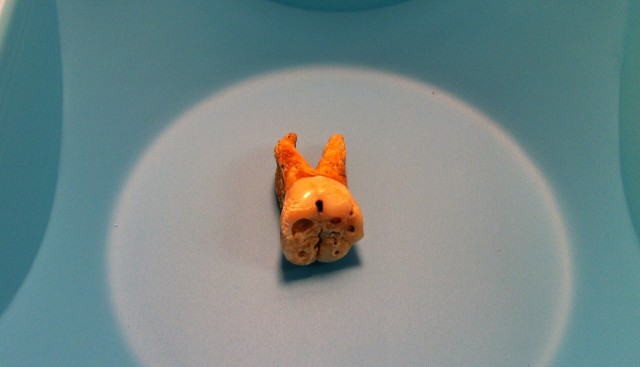
How to Manage a Distributed Remote Team Nov 23, 2024


How to Secure CRM Software and Ensure Data Privacy Sep 30, 2024



How NLP Can Transform Your Communication Skills Aug 27, 2024

Essential HVAC Maintenance for Rental Properties Aug 26, 2024

Maximizing Equipment Lifespan with CMMS Software Aug 08, 2024

Top Business Tools for Streamlining Your Operations Aug 01, 2024
Plague DNA Found in Ancient Tooth. The Bubonic Plague May Not Be Dead Yet [VIDEO]
Jan 29, 2014 19:28

The Bubonic plague isn't dead just yet. A discovery of two ancient, plague ridden teeth are teaching us a thing or two about one of the worst pandemics in history.
The 1,500 year old teeth belonged to Justinian plague victims buried in Bavaria, Germany between 541 and 543 CE. It contained tiny fragments of actual plague DNA, making them the oldest pathogen genomes we have ever accessed.
Scientists found that both it and the Bubonic plague (which struck until 800 years after it) are two different strains of the same pathogen. That's scary because the third version of the rodent-carried plague could still exist.
As Tom Gilbert, a professor at the Natural History Museum of Denmark, told the AP:
What this shows is that the plague jumped into humans on several different occasions and has gone on a rampage. That shows the jump is not that difficult to make and wasn't a wild fluke. Humans are infringing on rodents' territory, so it's only a matter of time before we get more exposure to them.
Scientists assure us that modern antibiotics would severely limit the disease's potential damage, but we never know how it could evolve into an airborne version, increasing its spread. According to Hendrik Poinar, director of the Ancient DNA Centre at McMaster University in Canada, that type of disease can kill within 24 hours of infection.All this news after Helix just came out. [Medical Xpress via McMaster University; AP]

Let’s be honest; OTT platforms have completely changed our movie-watching experience and made entertainment just a click away. A few years ago, who would have thought that watching regional or international movies could be this easy, convenient, and tailored to our budget and preferences? And, yet here we are enjoying the options of Marathi, Malayalam, Hindi, Gujarati, Tamil movies, and a lot more at our fingertips. Read more

Electronic Logging Devices (ELDs) have revolutionized the trucking industry by streamlining logging practices and ensuring compliance with federal regulations. Designed to monitor a vehicle’s engine and automatically record driving hours, ELDs replace traditional paper logs and provide an efficient solution for tracking Hours of Service (HOS). If you're looking to complement your fleet's technology, partnering with tools like a reliable truck dispatch service can further optimize operations and keep your business running smoothly. Read more

The HONOR Magic 7 Pro price in ksa makes it an appealing option for those looking for a high-end smartphone. This advanced device stands out with its sleek design and robust build quality. This blog delves into the details, examining what makes the HONOR Magic 7 Pro unique, from the materials used to its overall durability and user experience. If you’re considering purchasing a high-end smartphone that balances aesthetics and functionality, this review of the HONOR Magic 7 Pro’s design and build quality will provide you with all the information you need. Read more
TECH NEWS
Jan 11, 2025 14:55
Copyright © Fooyoh.com. All rights reserved. User Agreement | Privacy Policy | Contact us
| Advertising
| About us
| Careers


















































